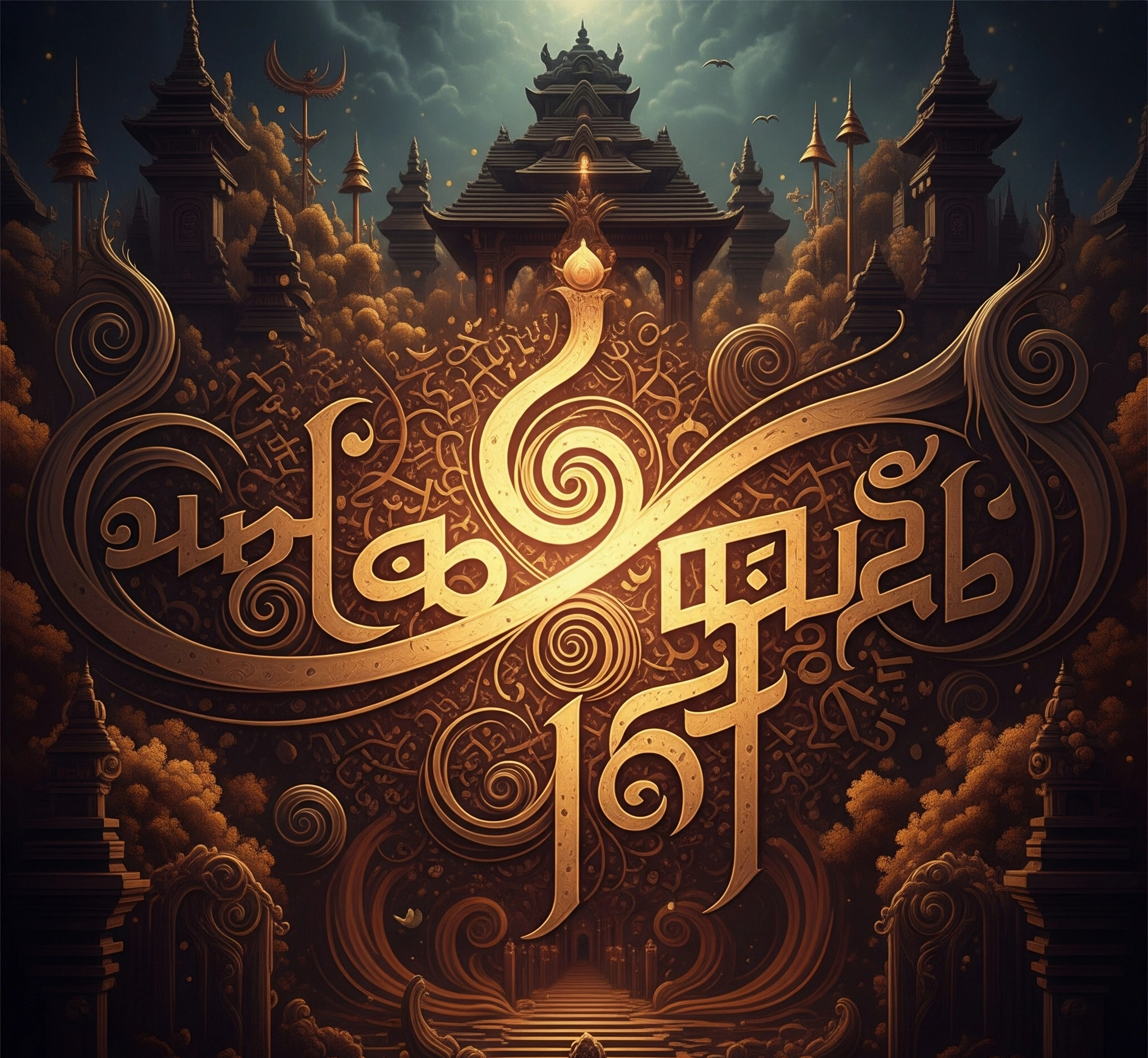1. More Than Just Writing: Hanacaraka and the Traces of History

Consider the foundational tools that shape our understanding of the world. For centuries, across diverse cultures, writing systems have been more than just communication tools. They serve as profound vessels of knowledge, philosophy, and worldview.
In the Indonesian archipelago, for instance, the Hanacaraka script stands as a testament to this deep connection. It is profoundly intertwined with Javanese culture. Often perceived merely as an ancient relic, Hanacaraka actually holds a wealth of philosophical meaning. This meaning eagerly awaits rediscovery.
Understanding this hidden dimension offers a richer appreciation for Javanese heritage. Moreover, it highlights its enduring relevance in today’s world.
2. Getting to Know Hanacaraka: Core Structure and Hidden Meanings
At its core, the Hanacaraka alphabet comprises 20 basic syllables. These are traditionally arranged in four lines, each containing five characters. Significantly, this structure is not arbitrary; it reflects a deep-seated philosophical framework.
The first line, “ha na ca ra ka,” speaks of existence. It signifies the very beginning of all things. Subsequently, “Da ta sa wa la” refers to the order and flow of life and natural laws. Furthermore, the third line, “pa dha ja ya nya,” represents the culmination and power of creation. Finally, “ma ga ba tha nga” symbolizes the return to the origin. It depicts the cyclical nature of existence.
Each individual character within these lines also carries its own symbolic weight. They contribute to the overarching philosophical narrative. For instance, the first character “ha” is often associated with the breath of life. Meanwhile, “na” signifies existence itself. Therefore, understanding this fundamental architecture is the first step in unlocking the deeper meanings held within the Hanacaraka.
3. Hanacaraka: A Network of Interconnected Symbols
Beyond individual characters and line structure, the true philosophical richness of Hanacaraka lies in its interconnected elements. The syllabic nature of the script is a key aspect. Consonants are inherently paired with the vowel ‘a’, unless modified by diacritics. This emphasizes the fundamental unity of sound and form.
Consequently, this can be interpreted as a reflection of the interconnectedness of all things in the universe. This is a core tenet of many Eastern philosophies. Furthermore, the visual forms of the characters themselves often echo natural forms and abstract concepts. This hints at deeper symbolic associations. For example, certain curves and lines might subtly evoke ideas of flow, stability, or growth.
The diacritics, which modify the base syllables, represent the nuances and variations within this interconnected reality. Understanding this ecosystem of interconnected symbols allows us to move beyond a literal interpretation of the script. In turn, we begin to grasp its underlying philosophical message of unity and interdependence.
4. The Author’s Experience: Tracing the Traces of Philosophy in Hanacaraka
My own journey into the depths of Hanacaraka began unexpectedly. It occurred during my time documenting ancient manuscripts in a remote Javanese village. Initially, I approached the script as a purely linguistic artifact. My focus was on deciphering its historical and literary content.
However, the more I immersed myself in the texts and their cultural context, the more I perceived a profound layer of meaning. This layer was woven into the very fabric of the writing system. It was subtle, yet significant.
One particular experience stands out clearly. I was working on a text detailing traditional Javanese cosmology. I noticed how the narrative flow seemed to mirror the cyclical structure of the Hanacaraka lines. The creation myths, descriptions of the cosmic order, and the eventual return to unity all resonated with the script’s embedded philosophical journey.
It was as if the very act of writing in Hanacaraka was a way of embodying and transmitting these profound concepts. Conversations with local scholars and elders further illuminated this connection. They spoke of the script as a “map” of the universe. It was, to them, a symbolic representation of the fundamental principles governing existence. This realization shifted my perspective entirely.
Therefore, I began to see Hanacaraka not just as a tool for recording language. Instead, it was a living embodiment of Javanese philosophical thought. This experience underscored the importance of cultural context in writing systems. It also highlighted the potential for hidden meanings within their structures.
5. Unveiling the Veil: Original Insights Behind Hanacaraka
The conventional understanding of the Hanacaraka alphabet often focuses on its phonetic structure and historical evolution. Yet, by considering its arrangement and inherent symbolism, a deeper philosophical layer emerges. This layer speaks to the cyclical nature of existence and the interconnectedness of all things.
Crucially, this is not merely a convenient mnemonic. Rather, it reflects a fundamental Javanese worldview. The progression through the four lines of the alphabet can be interpreted as a symbolic journey. It moves from the emergence of being (“ha na ca ra ka”), through the unfolding of order (“da ta sa wa la”), to the manifestation of power (“pa dha ja ya nya”). Finally, it arrives at the return to the source (“ma ga ba tha nga”).
This cyclical motif is a recurring theme in Javanese philosophy and spirituality. It finds echoes in concepts of rebirth, the balance of opposing forces, and the continuous flow of the universe. Furthermore, the inherent ‘a’ vowel sound in the basic consonants represents the fundamental, undifferentiated essence of existence. From this essence, all forms arise.
The diacritics then represent the diversification and individualization within this unified field. Overall, this perspective offers a unique lens. Through it, we can understand not only the Hanacaraka script but also the broader philosophical landscape of Javanese culture.
6. Uncovering Hidden Meanings: A Guide to Hanacaraka Appreciation
To truly appreciate the hidden philosophical meaning within the Hanacaraka alphabet, consider the following framework:
- Visualize the Cycle: When encountering the script, mentally trace the four lines. Contemplate the journey from origin to order, to manifestation, and back to source. Reflect on how this cyclical pattern resonates with your own understanding of life and the universe.
- Contemplate Individual Symbols: Take time to study each of the 20 basic characters. Research traditional interpretations of their symbolic associations. Consider how their visual forms might relate to these meanings.
- Recognize Interconnections: Observe the syllabic structure and the role of the inherent ‘a’ vowel. Reflect on the concept of interconnectedness and unity that this structure subtly conveys.
- Explore Cultural Context: Delve into Javanese cosmology, spirituality, and artistic traditions. Look for parallels between the philosophical themes embedded in Hanacaraka and other aspects of Javanese culture.
By actively engaging with the Hanacaraka in this way, we move beyond simply reading the script. Instead, we begin to appreciate its profound philosophical depth. This framework encourages a more holistic understanding. It recognizes Hanacaraka as not just a writing system, but as a symbolic key. This key unlocks the rich tapestry of Javanese thought.
A LEGACY ETCHED IN SYMBOLS & BIO

The Hanacaraka alphabet, though ancient, continues to hold relevance in the modern world. Its hidden philosophical meanings offer a valuable window into the rich cultural heritage of Java. Additionally, it provides timeless insights into the nature of existence, order, and interconnectedness. By recognizing the depth embedded within this elegant script, we gain a more profound appreciation for the wisdom of the past. This wisdom powerfully informs our present and future.
For more detailed information on Javanese script, you can visit our related article: Javanese Script (Aksara).